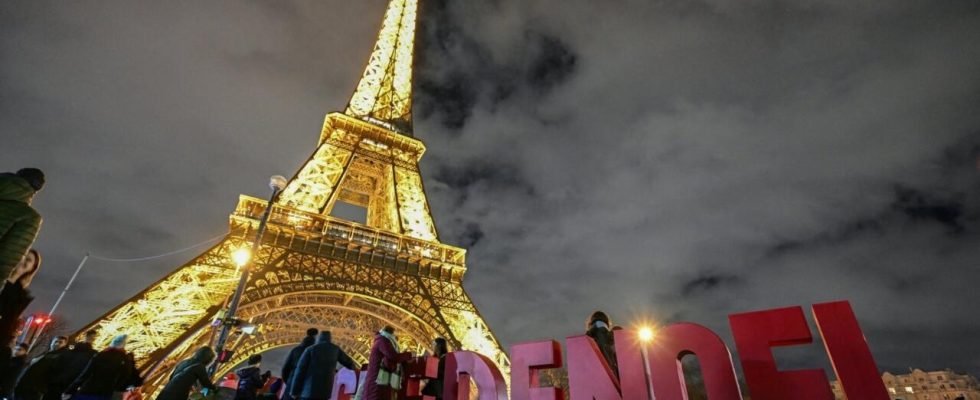Although France shares many Christmas traditions with its European neighbours, some customs are quintessentially French – like oysters on ice, the bûche de Noël (Christmas log cake) and a decided emphasis on Champagne. FRANCE 24 takes a look at some of the traditions you might encounter if celebrating the holiday à la française.
The Christmas season is a time of the year when the French set aside their treasured notion of being a staunchly secular country to revel in holiday traditions, many of them rooted in Christianity and – going back further – Roman and ancient Pagan rites.
Christmas markets ring in the season
As in countries across Europe, Christmas markets spring up in France starting in November, with many continuing through the first week of January. Kiosks resembling wooden Swiss chalets sell mulled wine, gingerbread (pain d’épice) and various gifts and crafts, continuing a tradition dating from the Middle Ages.
Paris hosts an array of Christmas markets in a typical year with additional “pop-up” markets appearing for just a day or a weekend. Among the most well known of the annual markets are the Village de Noël near the Eiffel Tower and at the Tuileries Gardens near Concord, Hotel de Ville (City Hall) in the Marais, Notre Dame in the city centre and in Saint-Germain-des-Prés.
For dates and locations of Paris Christmas markets in 2023, please click here.
Strasbourg in the Alsace region bordering Germany proclaims itself the “Capital of Christmas” and is particularly known for its Christmas market, which is the oldest in France (dating from 1570) and one of the oldest in Europe. Every year, a 30-metre-tall Christmas tree is brought to Place Kléber and decorated with ornaments and lights while merchants and craftsmen offer their wares at the some 300 wooden chalets dotted all over the city centre. For most of December, Strasbourg becomes one of the most illuminated cities in France.
Advent
The first day of Advent on December 1 marks the official countdown to Christmas in many Christian traditions. French supermarkets and other stores invariably carry advent calendars (calendriers de l’avent) – box calenders with a folding door for each day leading up to Christmas that reveals a chocolate or small trinket when opened.
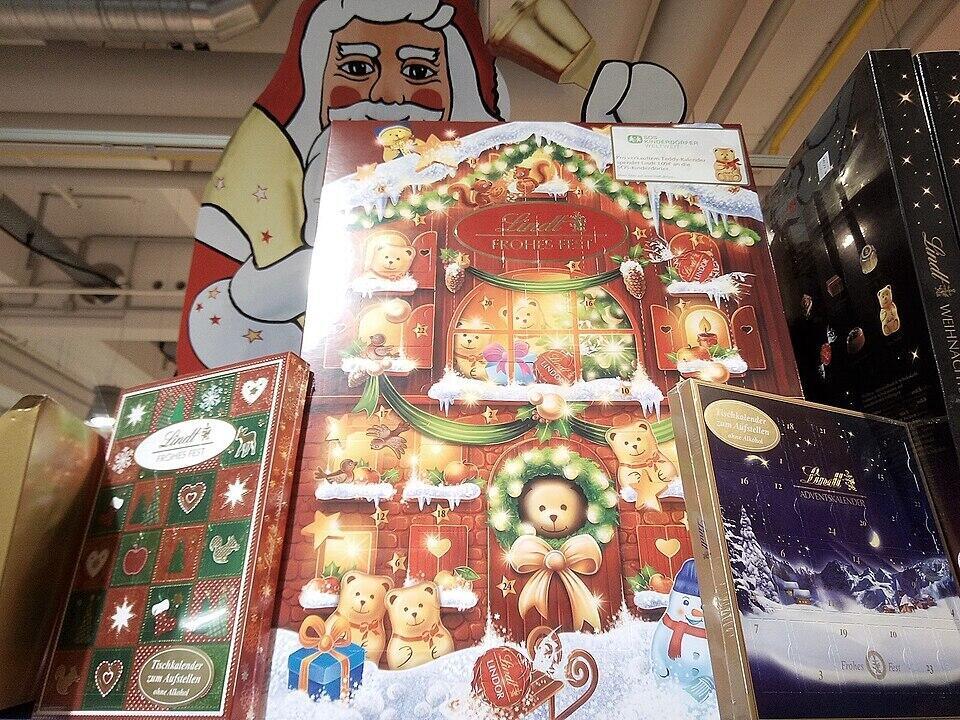
Advent wreaths (Couronnes de l’Avent) may also make an appearance around this time, often adorned with pine cones, bows and four candles. Traditionally, one candle will be lit on each Sunday leading up to Christmas.
The menace of Père Fouettard (Whipping Santa)
In parts of northeastern France and beyond, Père Fouettard is a frightening figure designed to scare children into being well behaved – his role is to punish the naughty while Santa Claus rewards the nice. With his black beard, shaggy hair and soot-smeared face, Père Fouettard whips misbehaved children on December 6, the day of Saint Nicholas, the patron saint of children. Those who have not been good over the past year may also find their long-awaited Christmas gifts consist of coal, beets or onions, all thanks to Père Fouettard.
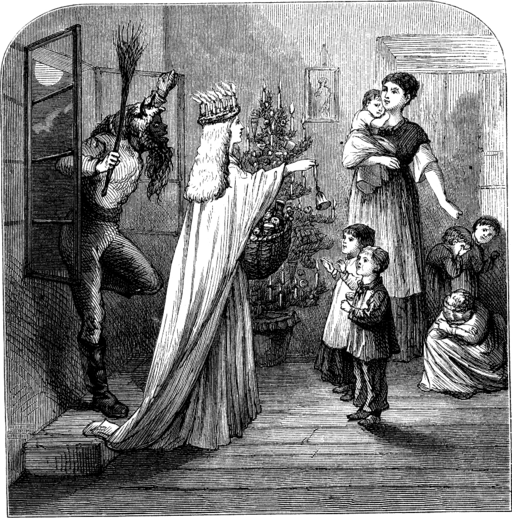
Well-behaved children were given chocolate and other sweets on the day of Saint Nicholas. Gradually, the December 6 tradition disappeared in most French regions and the ritual giving of chocolate and gingerbread was incorporated into Christmas.
Les papillotes de Noël
Papillotes are small gifts of chocolate, wrapped with a little note inside decorative paper with fringed ends. They are thought to have been invented around 1790 by a young apprentice chocolatier in Lyon who fell in love with a girl from the neighbourhood and sent her chocolates wrapped in love notes. When the master chocolatier, Monsieur Papillot, discovered these unique gifts he decided to manufacture and market them, and the papillote en chocolat was born. Today the candies often come wrapped in gold foil along with little holiday messages or proverbs and are popular in France around Christmas as well as New Year’s.
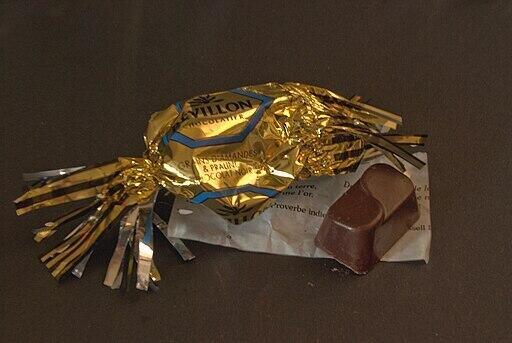
The santon figurines of Provence
Adorning many a Christmas crèche in the southern Province region are handmade and painted ceramic figurines known as santons, from the Provençal term “santoun” (for little saint).
While Joseph, Mary and Jesus are represented in many a manger scene, the santons often depict a whole village, including craftsmen, farmers and the local baker. An iconic figure among the santons is the Ravi, a man depicted with outstretched arms who is openly marvelling at the miracle of the nativity.

The 13 desserts
Another Provençale tradition is that of the 13 desserts, which are said to symbolise Christ and the 12 apostles. An array of 13 offerings – including dried fruits, nuts, nougat and marzipan candies, and an olive oil cake called Pompe à l’huile – are laid out in the week before Christmas so that holiday visitors will have something to nibble on. Tradition holds that partaking of each of the 13 treats will bring good luck in the coming year.
Réveillon de Noël
Christmas would not be complete with a sumptuous feast, and in France that meal is known as the Réveillon de Noël (from the verb réveiller, to rouse or awaken) and often takes place on December 24. The table may be decorated with an Advent wreath and candles, and some advise knotting the ends of the tablecloth so the Devil can’t get under the table.
In the Middle Ages, midnight Mass was preceded by a meagre meal; it was customary to eat only a little bread, fish or vegetable broth and drink a glass of water. Christmas dinner was the big traditional meal served to worshippers on December 25 after a long nighttime church service. Though fewer people these days attend midnight Mass, the tradition of a big Christmas Eve or Christmas Day meal has survived.
Foie gras
Throughout December, supermarket shelves are laden with cans and jars of foie gras, a French specialty of fattened duck or goose liver, often served as a starter as pâté on warm toast with some jam, often onion or fig.
Though many have stopped eating foie gras because of the way the birds’ livers are artificially fattened through gavage, or force-feeding, it remains one of the most popular food items for a French Christmas meal, and France today remains its largest producer by far.
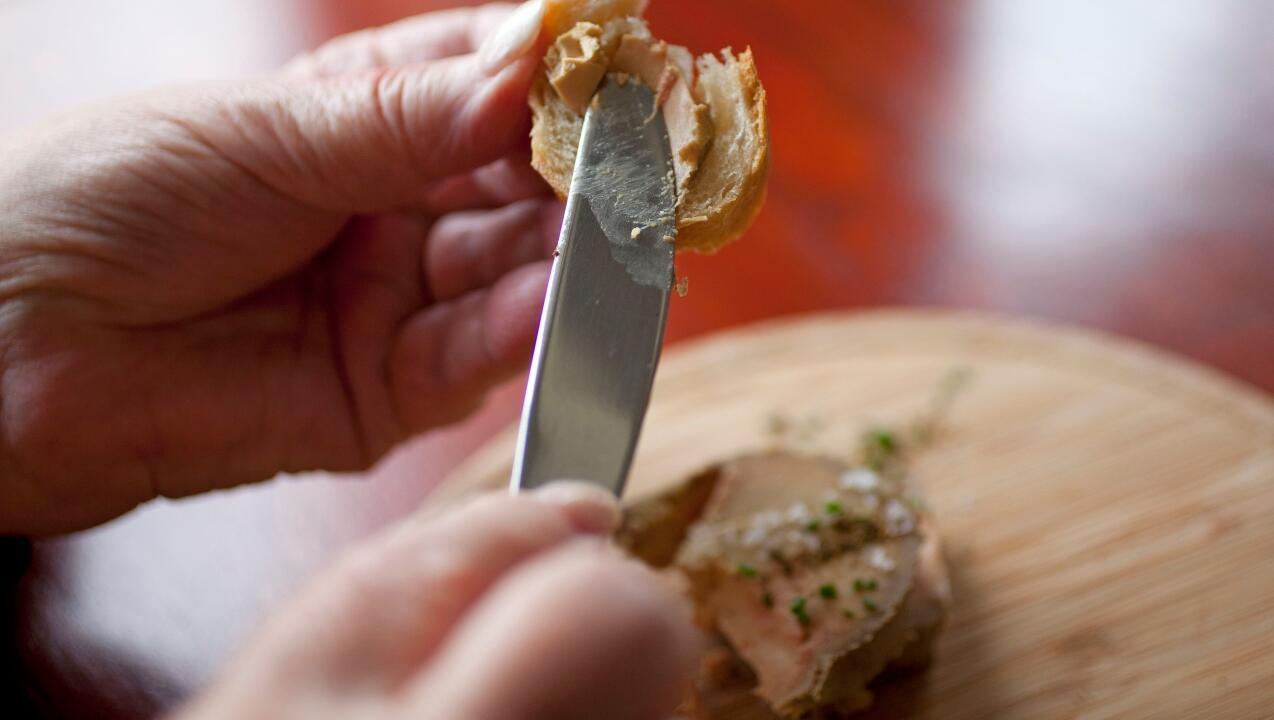
Literally translated as “fat liver”, foie gras originated in ancient Egypt before it spread throughout the Mediterranean and was adopted by the Greeks and then the Romans. Later, in the Middle Ages, the tradition of gavage was carried on by the Jewish population, since goose meat was viewed as a good source of nutrition and its cooking fat conformed to Jewish dietary laws.
The popularity of foie gras grew during the Renaissance, when it became associated with the kings of France. The term “foyes gras” was coined during the reign of Louis XIV and it was served at royal banquets under Louis XV, but it was Louis XVI who declared it the “dish of kings”.
Foie gras is also often served pan-roasted, or sliced over a cut of meat, or as a sauce. It is produced in winter, and its high price makes it a luxurious holiday product that is perfect for year-end festivities.
For those who do not eat foie gras, other common starters at a French Christmas or New Year’s dinner are smoked salmon, scallops (coquilles Saint-Jacques), shrimp or oysters.
Oysters
The French are among the largest consumers of oysters in the world, with more than 100,000 tonnes of oysters served in France each year, a large portion of which make it to the Christmas dinner table.
Oysters are easy to find in France, with its long coastline, and are relatively inexpensive for a holiday dish. They are most often served fresh on shaved ice alongside a red wine vinaigrette with shallots (sometimes known as a mignonette) or simply a wedge of lemon.
It is customary to eat oysters only during months that have an “r” in their names – September through April. This is not only because they taste best during this period but due to habit – long before refrigerated transportation methods were invented, oysters could only be shipped inland from the sea during the cold winter months if they were to stay fresh and not spoil before being served. Salmon, lobster, crayfish and other seafood are also traditionally eaten in the winter for the same reason.
Christmas turkey (or any other stuffed bird)
Much like in the United States or Great Britain, a staple of French Christmas dinner is the stuffed turkey, or the dinde de Noël.
Before the turkey arrived in Europe from the Americas in the 17th century, the French ate stuffed goose. But the turkey has mostly replaced the goose as the holiday bird of choice because it is less expensive, yet larger and meatier than chicken and thus fit for a holiday feast.
A smaller but at least as succulent fowl that is very popular in France during the winter holidays is the capon (chapon), a cockerel that was neutered to render its meat fattier and usually weighing 3-4 kilos, or the even smaller guinea fowl (pintade).
Whatever bird is chosen, it is generally roasted and served with a special Christmas stuffing that traditionally includes chestnuts and often mushrooms.
Other holiday main dishes in France include roasted meats such as lamb or beef and also game, such as wild boar, venison or pheasant, which are not often eaten year-round by French people who are not hunters.
Bûche de Noël
No Christmas in France is complete without a bûche de Noël, otherwise known as the Yule log cake. The bûche is an elaborate creation made of a rolled sponge cake filled with cream and frosted to look like tree bark or a log. It is a reminder of an earlier tradition, dating back to the Iron Age, when people in Europe would gather to welcome the winter solstice on December 21, the longest night of the year. Families would burn large logs, usually from fruit trees, anointed with wine and salt and decorated with pine cones, holly or ivy. The log kept the house warm, and its ashes were said to have medicinal benefits and to guard against evil.
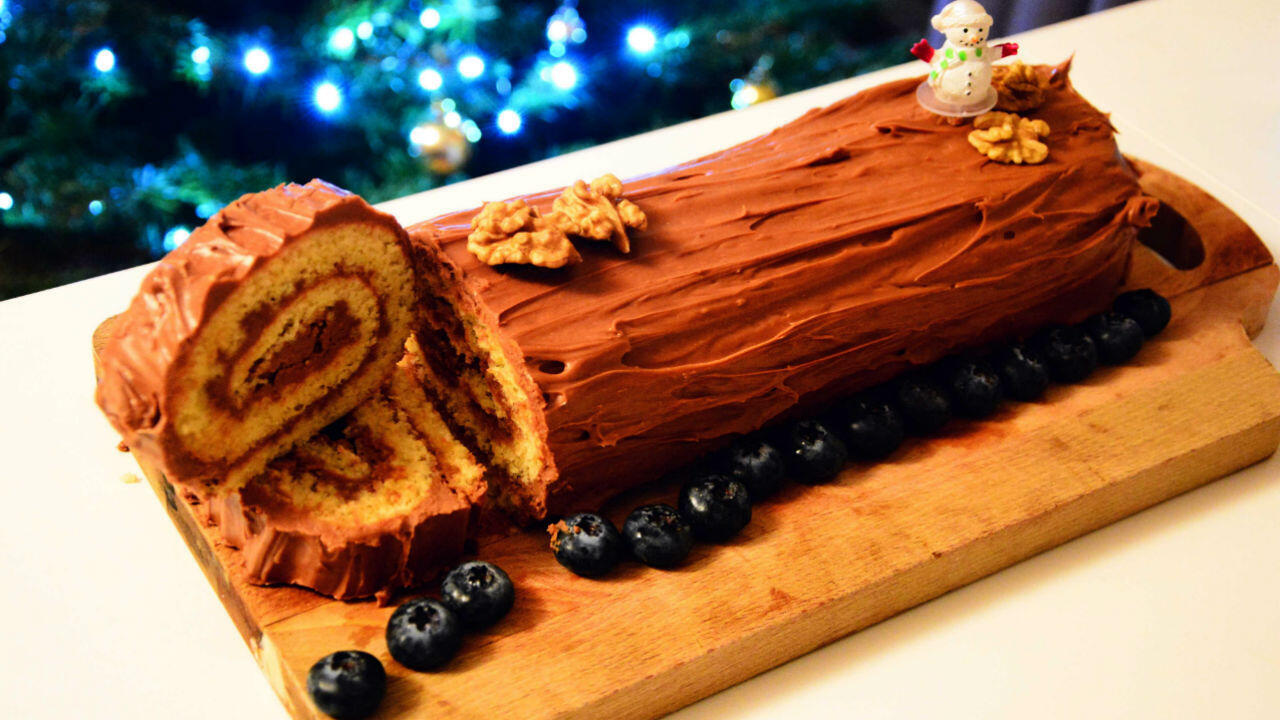
After a meal of stuffed goose, capon or other roasted meat – not to mention champagne flowing like water, good wine and a wide variety of rich desserts and chocolates – it’s not surprising that the French speak of a crise de foie (translated literally as “liver crisis” but more accurately as indigestion) at the end of the winter holiday season.
But a little crise de foie is a small price to pay for a fantastic festive meal (or several) with family and friends to ward off the winter chill.
‘Fin d’année’ festivities: Exploring France’s holiday traditions

While the main event may be over as the year draws to a close, the festivities do not yet stop in France, which carries the holiday season into February.
Les Étrennes
Les Étrennes is a New Year’s Eve tradition of gift-giving dating back to Roman times, when offerings typically included honey, dates or money as well as laurel leaves or branches. Today in France the day is marked by offering an envelope of money and sometimes a card to those who do work for you all year round, notably garbage collectors, firefighters, mailmen and your building’s concierge or guardien(ne).
Epiphany and the galette des rois
Most of France marks Épiphanie on January 6 with a galette de roi (king cake), a flaky puffed cake layered with frangipane, a sweet almond paste. The cake has a ceramic bauble (the fève) baked inside. Whoever receives the slice with the fève becomes king or queen for the day (galettes de roi are sold with a gold paper crown). Traditionally, the youngest person present crawls under the table and selects who the next slice will go to.
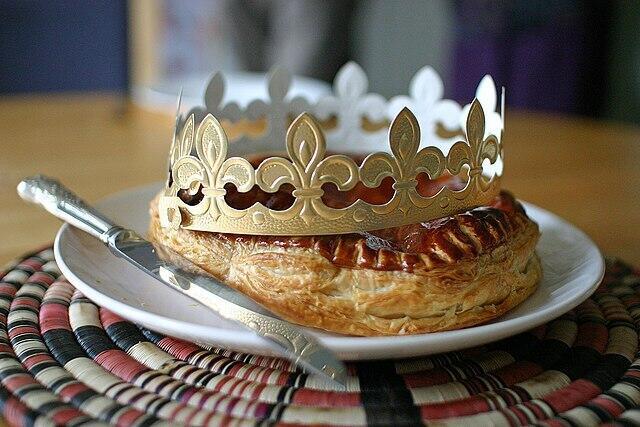
Christian legend holds that Epiphany, or Three Kings’ Day, is when the three wise men arrived in Bethlehem. But the tradition of the fève dates from Roman celebrations of Saturnalia in late December and early January, when slaves would dine with the rest of the household. If a slave received the fève they could have anything they wanted for the day.
The Chandeleur
The Chandeleur is celebrated on February 2 to mark 40 days after Christmas. Known as Candlemas by the Christians, it is another tradition that can be traced back to Roman pagans, who celebrated that the days were getting longer around this time. Today in France it is when Christmas nativity scenes are often taken down and a day for eating crêpes that are round and golden like the sun to herald the return to longer days. Holding a coin in your left hand while successfully flipping a crêpe with your right is thought to bring prosperity.
A previous version of this story was originally published on December 17, 2020.
